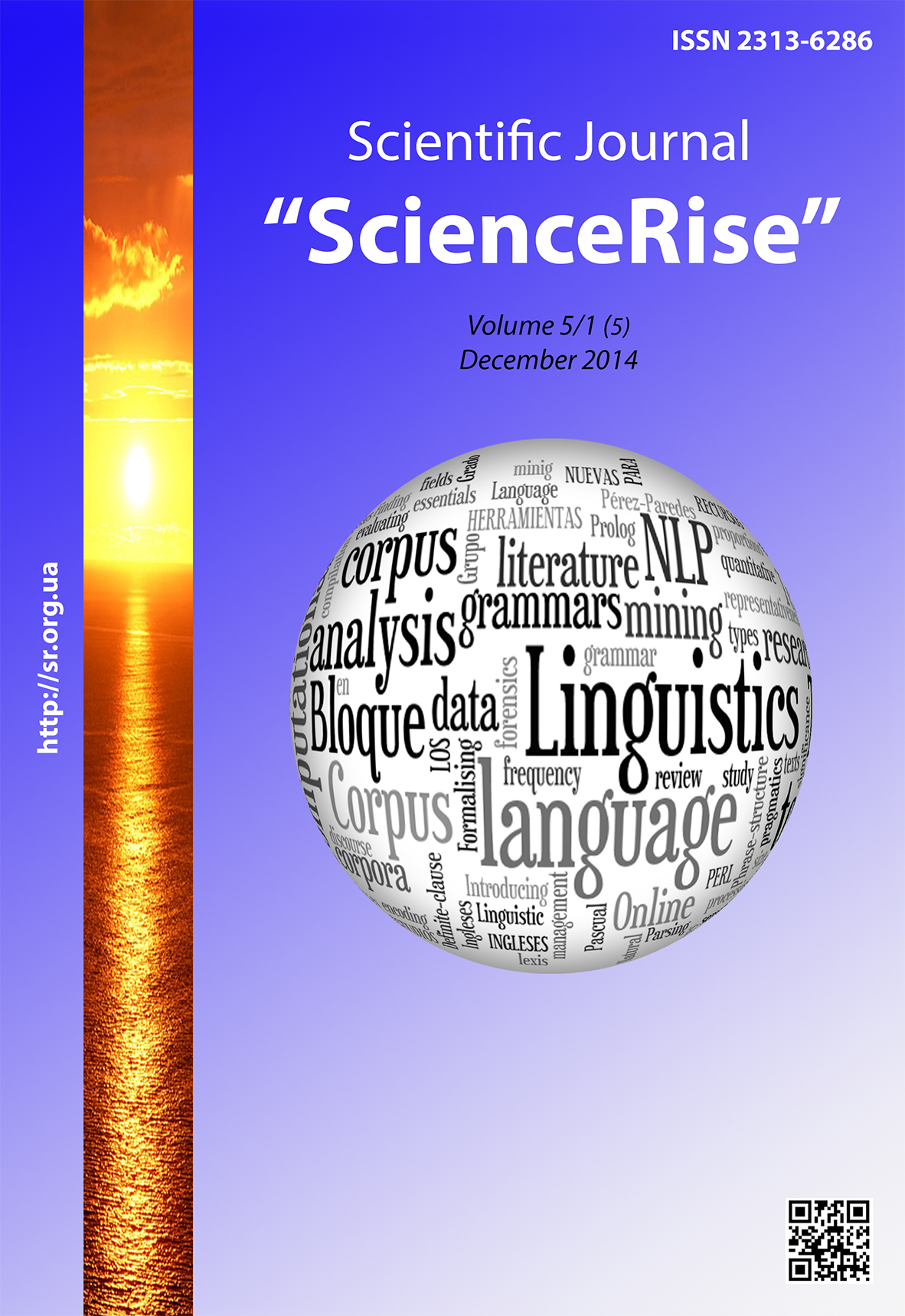Formation of ethno-linguistic situation in the south Ukraine: retrospective and perspectives
DOI:
https://doi.org/10.15587/2313-8416.2014.30190Keywords:
South Ukraine, bilingualism, Ukrainian and Russian, Ukrainians, Russians, Kherson provinceAbstract
The features of modern ethno-linguistic situation formation in the Southern region of Ukraine for two hundred years are considered, there are analyzed the situation of mass settlement of the area and functioning of Ukrainian and Russian –the bilingual components of historical opposition, the artificial deformations in the relations of village and city are determined as a main factor of forming of negative social situation. It is done a conclusion about historical priorities of Ukrainian nation – agriculture and rural culture – as recommendation for a public policy.
References
About a population of the province for general census of 1897 (1905). Kherson, 67.
Skalkovsky, A. (1844). Odessa 84 years ago and now. Odessa, 60.
Zagorovsky, A. (1913). Slavic colonization of New Russia. Kyiv, 59.
Lobachevsky, V. (1887). Bug’s kozaks and military settlements. Kyiv, 36.
First general Russian Empire Census, 1897 (1904). XLVII. Herson province Moskow, 319.
Mohylansky, N. (1920). Nature and population of Novorossia as factors of production. Odessa, 25.
Education in Kherson province in 1910 (1912). Kherson, 333.
Odessa region: address book (1934). Odessa, 276.
The amount of urban and rural population on January 1, 1991. (1991). Rural settlements and population. Kherson, 31.
Demchenko, V. M. (2001). Language areal. Extralіngvіstic novel about South Ukraine : monographіa. Kherson, 216.
Demchenko, V. M. (2003). Organіc and no-organіc Ukraine. Kherson, 188.
Downloads
Published
Issue
Section
License
Copyright (c) 2014 Володимир Миколайович Демченко

This work is licensed under a Creative Commons Attribution 4.0 International License.
Our journal abides by the Creative Commons CC BY copyright rights and permissions for open access journals.
Authors, who are published in this journal, agree to the following conditions:
1. The authors reserve the right to authorship of the work and pass the first publication right of this work to the journal under the terms of a Creative Commons CC BY, which allows others to freely distribute the published research with the obligatory reference to the authors of the original work and the first publication of the work in this journal.
2. The authors have the right to conclude separate supplement agreements that relate to non-exclusive work distribution in the form in which it has been published by the journal (for example, to upload the work to the online storage of the journal or publish it as part of a monograph), provided that the reference to the first publication of the work in this journal is included.

